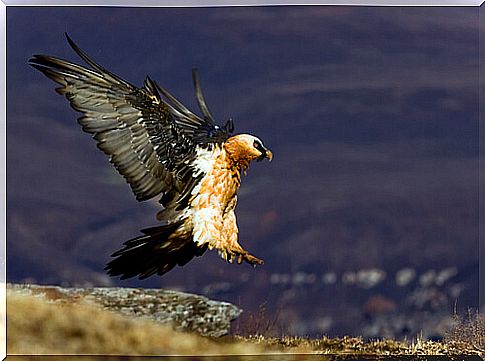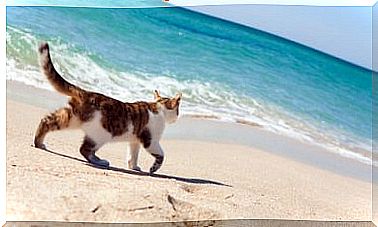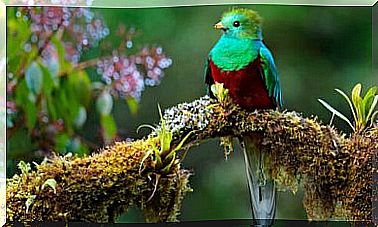The Conservation Of The Bearded Vulture
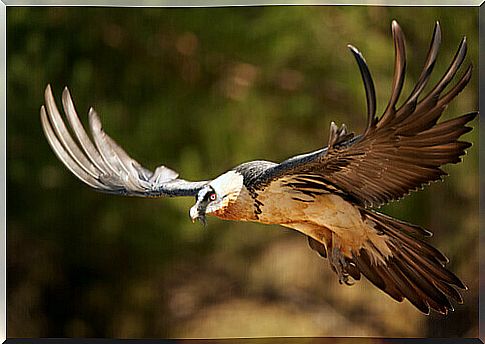
The bearded vulture disappeared from the Central European mountains in the 19th century. After its extinction in most of the peninsula, an isolated population survives in the Pyrenees. Given the importance of the conservation of the bearded vulture, today numerous activities are carried out aimed at the maintenance of this bird.
The conservation of the bearded vulture
Historical and current distribution
It inhabited the main European mountains, where it has been valued as extinct recently. In the Alps, however, the species has been recovered through conservation programs. The current populations are in Corsica, Crete and the Pyrenees, where they occupy large areas with extensive cattle ranching and rocky cuttings.
Less than half of the couples trying to breed manage to raise a chick each year. This, together with the high mortality they suffer and their low colonizing capacity, make it necessary to start projects that guarantee their survival.

Why are they bad colonizers?
The available data have made it possible to verify that the appearance of new bearded vultures is generally associated with the artificial creation of supplementary feeding points, known as middens. But it is also due to the presence of adult birds in the vicinity. The latter has led to the development of social attraction techniques to manage to fix specimens in areas where the species disappeared years ago and that today are only visited during erratic flights.
The application of these techniques includes actions such as:
- The installation of lures, which consist of life-size reproductions of synthetic resin bearded vultures. They are located in places consistent with those that the species would normally visit in the Pyrenees.
- Reconstruction of ancient nests.
Old LIFE projects allowed the placement of lures in the Iberian system and it is planned to implement it in Picos de Europa. In fact, they are systems that have already been quite effective with other birds such as the osprey in Corsica or the red kite in Scotland.
The importance of livestock in the conservation of the bearded vulture
The existence of this bird in the Spanish mountains is directly associated with the presence of herds of sheep and goats in an extensive regime. Their survival is at odds with the maintenance of grazing in the northern part of the peninsula.

The bearded vulture is almost the only bird that feeds exclusively on bones and their contents. In fact, they usually obtain them from remains that have already been eaten by other scavengers, such as the griffon vulture.
Threats to the conservation of the bearded vulture
The main cause of unnatural mortality is associated with the illegal use of poisoned baits, which also affects the most valuable segment of the population: adult birds. The use of poison has been a crime since 1995: it is considered to cause the indiscriminate death of thousands of wild animals, especially predators and scavengers in danger of extinction, as is the case.
The second cause of mortality is related to illegal hunting, which is becoming less frequent, or electrocutions in high mountain power lines or collisions. The modern management of electricity companies is allowing the application of corrective measures to reduce the impact on flying fauna.
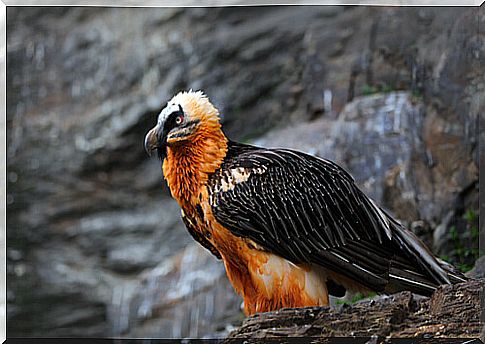
The recovery of the bearded vulture in Picos de Europa
Since 1994, and with the support of the LIFE 02 / NAT / E / 8624 Program, a series of projects have been developed that have provided valuable information on the bearded vulture, which has improved the survival of the Spanish population.
Objectives of the project
- Create the necessary environmental conditions so that the specimens are permanently established in these mountains.
- Integrate bearded vulture conservation programs into the national park’s own master plan.
- Adapt conservation actions to the recommendations of the Bearded Vulture Conservation Strategy in Europe.
Conservation actions for the bearded vulture
All of them are included in the criteria established by the IUCN and the National Strategy for the Conservation of the Bearded Vulture:
- Habitat study : assesses the environmental quality of Picos de Europa to maintain a viable population of these birds.
- Corrective measures of the infrastructures that may affect their survival, for which dangerous power lines for the species are identified.
- Rental of land to install supplementary feeding points and capture areas.
- Maintenance of the network of dumps, for which food is provided from official slaughterhouses that guarantee its hygiosanitary quality.
- Techniques of social attraction and simulation of reproductive territories.
- Environmental education : facilitates knowledge of the species, guarantees social participation and promotes the collaboration of public administrations.
- Monitoring, with satellite technology, of the specimens present in the area.
